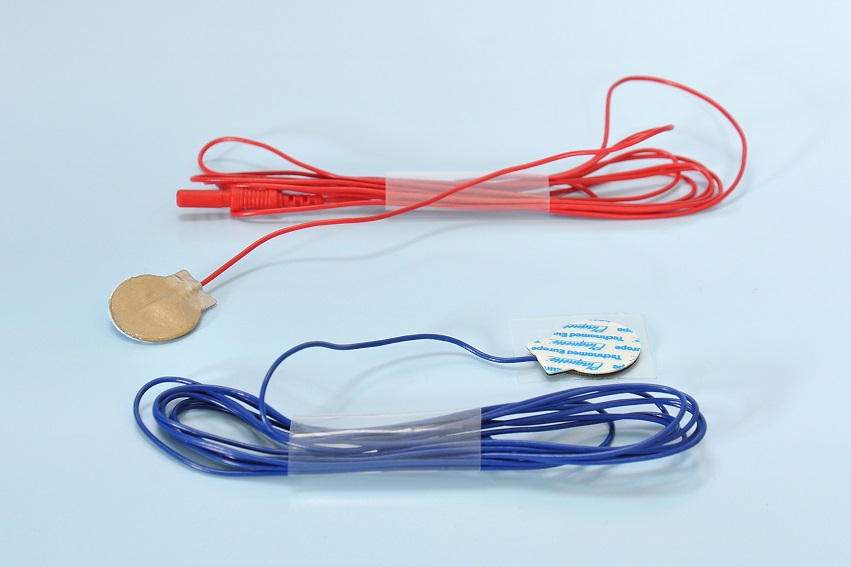
Surface electrodes are placed on the skin or mucosa and do not penetrate the surface. They typically consist of a metal or conductive polymer disc with a diameter of 5–30 mm, which is attached to the skin above the observed muscle using adhesives. Surface electrodes can be either dry or floating. Dry electrodes are in direct contact with the skin, whereas floating electrodes use an electrolytic gel as a chemical interface between the skin and the metallic part of the electrode.
For recording sum potentials through mucosa, circular or cylindrical shaped electrodes on non-conductive applicators are used. They are non-invasive but the least selective electrode type. In studies focusing on nerve conduction velocity and neuromuscular transmission, or in intra-operative monitoring of the thyroarytenoid muscle during thyroid surgery, surface electrodes are used as reference electrodes for monopolar needle electrodes. For this purpose, surface electrodes are attached to the laryngeal tube above the cuff to ensure direct contact to the vocal folds.
The recorded potential represents the weighted sum of all the individual potentials produced by the activated muscle, each divided by its respective distance from the electrode. As this creates a hemisphere of recording below the surface electrode which has fuzzy limits, these electrodes are not suitable for recording details or electrical events associated with individual motor units.
